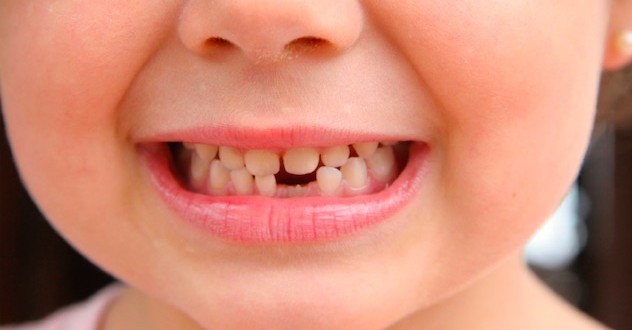When Calgary, Alberta decided to remove fluoride from its drinking water in 2011, the rate of tooth decay in Calgary children increased found a new research.
In primary teeth, known more commonly as baby teeth, there was a worsening in tooth decay in Calgary since the discontinuation of fluoridation in 2011, compared to Edmonton, where water is still fluoridated. In fact, the number of tooth surfaces with decay per child increased by 3.8 surfaces in Calgary during the time frame of the study, compared to only 2.1 in Edmonton. This is a statistically significant difference. The average child has about 20 teeth with four or five surfaces per tooth.
“This study points to the conclusion that tooth decay has worsened following removal of fluoride from drinking water, especially in primary teeth, and it will be important to continue monitoring these trends,” says Lindsay McLaren, PhD, the study’s lead author from the University of Calgary’s Cumming School of Medicine and O’Brien Institute for Public Health.
Water fluoridation shown to improve children’s oral health
Tooth decay is the most common infectious disease in children. The consequences of tooth decay include pain for the child, expense of dental treatments such as extractions and fillings, and the soreness can also influence the performance of a child at school. Dental concerns are also the leading cause of day surgery for young children in Canada, including in Alberta.
“The early effects of fluoridation cessation found in this study support the role of water fluoridation in contributing to improved oral health of children and that it is a public health measure worth maintaining,” says Steven Patterson, dentist and professor at the School of Dentistry, University of Alberta.
McLaren carried out the study with a number of colleagues from the University of Alberta and Alberta Health Services.
Comparing data on more than 5,000 children in Edmonton and Calgary
“I was not at all sure that we would see these effects,” she says.
“It had only been about three years since fluoride was removed, which is on the short side; plus, there are potentially several sources of fluoride in both environments, which would tend to reduce the observed effect of removing fluoride from the drinking water,” says McLaren, an associate professor in the department of Community Health Sciences.
Researchers used surveillance data from students that was collected in 2004/05 and compared it to data they collected from students in the 2013/14 school years in both cities. Grade two students were picked because they are at an age where researchers could examine both baby teeth and adult teeth in one group.
Data was collected from more than 5,000 children in the two cities — the schools were randomly selected from both the public and Catholic school systems. The two cities were compared because Edmonton has had fluoride since 1967 and still does, while Calgary stopped the practice of community water fluoridation in 2011. Fluoridation in Calgary had only been in place since 1991.
Removing fluoride from drinking water still an ongoing debate worldwide
Removing fluoride from drinking water is a debate facing many communities in North America and around the world. Fluoride is a tooth-enamel-strengthening mineral that was first introduced into public drinking water in 1945.
There are currently few published studies that look at the effects of fluoridation cessation. Researchers from the paper hope their study can be explored by decision-makers who are involved in these discussions.
Agencies/Canadajournal
 Canada Journal – News of the World Articles and videos to bring you the biggest Canadian news stories from across the country every day
Canada Journal – News of the World Articles and videos to bring you the biggest Canadian news stories from across the country every day




This sound like baloney. There is plenty of fluoride on toothpaste. Nothing is mentioned about the negative health effects of ingesting fluoride. Who will benefit from a policy change like this… ask yourself that!